Visiting the most famous Mayan ruins soon? You’ll want to know these super interesting and fun facts about Chichen Itza! From mysterious sounds to gruesome history, they’ll paint a unique picture of the site.
Chichen Itza is one of the most renowned attractions in all of Mexico. Dating back to the beginning of the 5th century, this impressive Mayan settlement is the number one in the region and one of the biggest.
Despite being so popular, there are many things about Chichen Itza that most people don’t know. From the different civilizations that inhabited it (yes, it wasn’t only the Mayan!) to impressive sound effects, and some very ghastly traditions, there are quite a few.
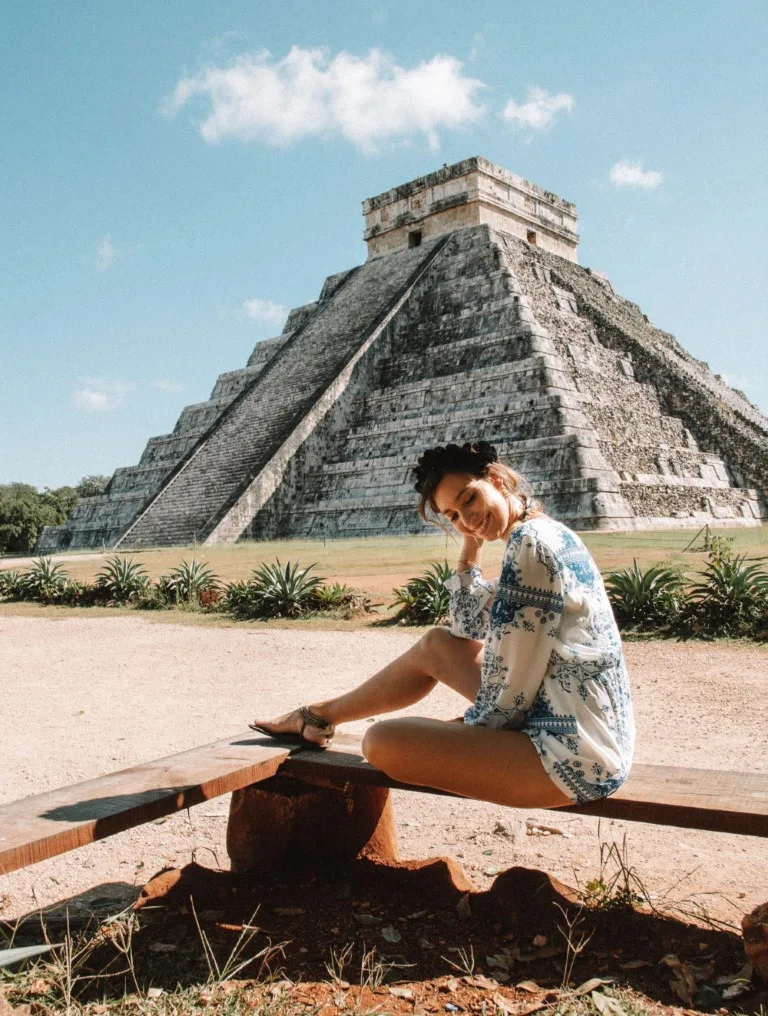
If you’re planning to visit the archaeological site any time soon, make sure to read on. Discover over 10 facts about Chichen Itza, Mexico, and impress your friends by clapping in the right places!
Table of Contents
WHAT’S IN A NAME? THE MEANING OF CHICHEN ITZA
The term Chichen Itza is not random. In fact, it has a very specific meaning which translates into the mouth at the well of Itza. It’s often also translated as the edge of Itza’s well.
Itza is the term used to refer to the Mayan communities that lived in the area. However, some argue that it has its own meaning, and derives from the Mayan words Itz (magic) and á (water).
The name is believed to have been attributed to the city because of its location by a sacred cenote. Three other cenotes surround the settlement, so water was indeed a big part of the community’s life.
THE MEXICAN EQUIVALENT TO RUSSIAN DOLLS
Chichen Itza is composed of over 20 structures, but undoubtedly the most popular (and visited!) is El Castillo. It’s also known as Kukulkan Pyramid, which is what the structure was called before being renamed by the Spanish.
A really cool Chichen Itza fact is that this impressive building, which is close to 98 feet tall, houses two smaller pyramids built before it. The structures are 65 feet (20 meters) and 32 feet (10 meters) tall.
The smallest pyramid is supposed to be the oldest one, as it was built during the original Mayan period. This was way before the Toltecs made an appearance and El Castillo was built.
The ancient Kukulkan Pyramid has been compared to Russian dolls for having two smaller pyramids within it.
THE DESCCENT OF THE SERPENT
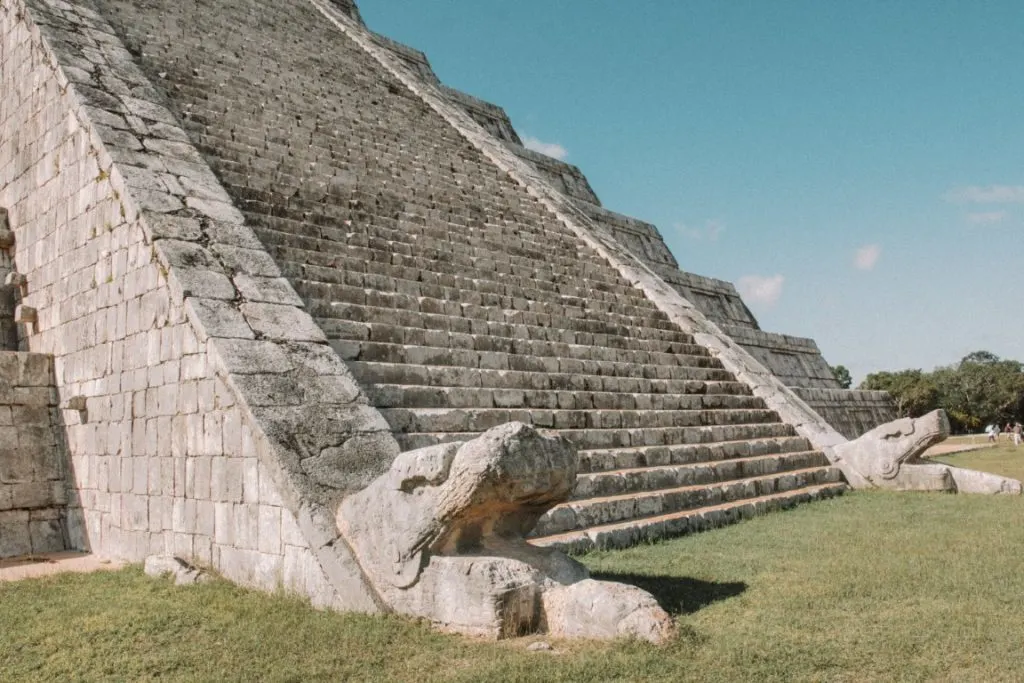
One of the most well-known Chichen Itza fun facts concerns the Kukulcan Pyramid. It’s no other than the event that occurs twice a year during the spring and fall equinoxes.
When the sun sets on that day, a shadow in the shape of a serpent slithers down the staircase. When it finishes its journey, it merges with the serpent head statue at the bottom of the pyramid.
The image is that of the feathered serpent god known as Kukulcan, in whose honor the temple was built.
While it’s a result of light and shadows, it’s astounding to see. And it can’t possibly be a coincidence that this worshipped god is the image portrayed! This showcases how advanced the Mayan civilization was in terms of astrology, mathematics, and physics.
To this day, the equinoxes are the two most visited days in the year. Both locals and tourists gather to witness the feathered serpent slowly make its way down the pyramid.
THE SOUNDS OF CHICHEN ITZA
The snake doesn’t only make its appearance twice a year in the shadows of the sunset, though. One of the most interesting facts about the Chichen Itza site is that it also features various strange sound acoustics.
They actually resemble the sounds of the snake and the Mexican quetzal, a sacred bird for the Mayan.
If you face the north side of the Kukulkan Pyramid and clap, you will distinctly hear the song of the quetzal. Clap again and pay attention to your left: you should be able to hear the snake’s sound coming from there!
Both animals played a big role in the Mayan culture and beliefs…Kukulcan is represented as a plumed serpent after all.
Another impressive acoustic feature takes place in the Ball Court. If you can clap once standing on one end of the court, you’ll hear nine echoes in the middle.
What’s more, you can very clearly hear anything that’s being spoken from one side to the other of the field. They are 456 feet away, by the way!
THE BALL COURT WAS THE LARGEST IN THE CONTINENT…BUT NOT THE ONLY ONE
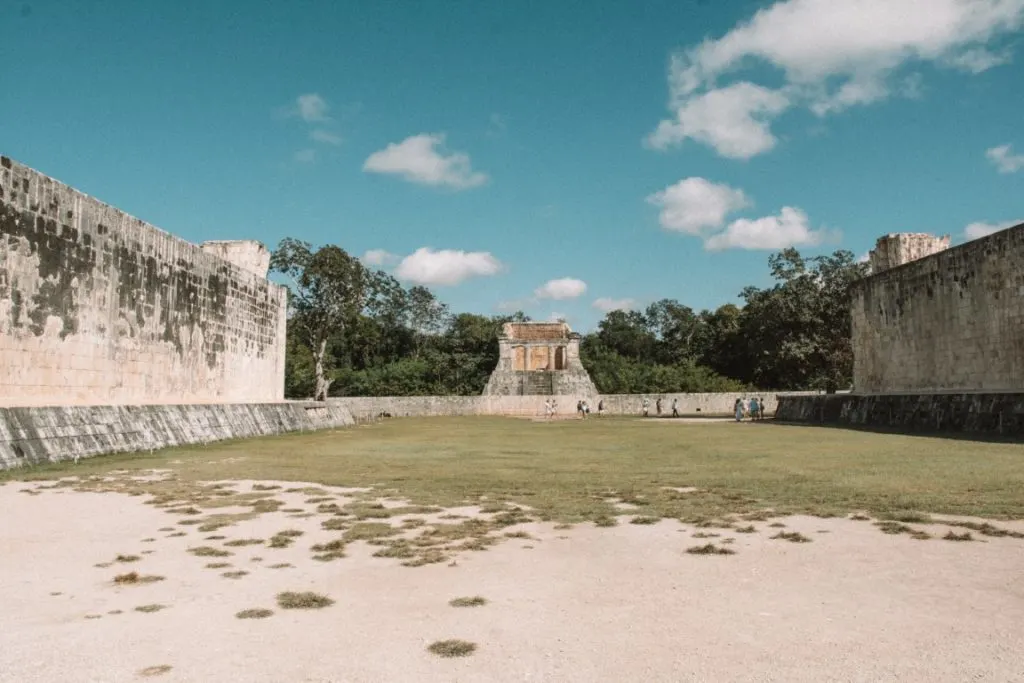
Chichen Itza’s Ball Court is 551 by 230 feet, and it was the largest in the continent by far.
It’s more than twice as big as a regular football field! While its primary function was to host ball games, wrestling events and festivities are supposed to have taken place here.
Nowadays, the Ball Court is one of the site’s main features. But did you know that there are actually 13 ball courts in Chichen Itza?
Sports were a big deal for the Mayan people, and they took them very seriously. So seriously, in fact, that the punishment for the losers was to be decapitated. And the 13 courts in one single settlement account for how important this tradition was for them.
The main goal of the ball game was to shoot a very heavy rubber ball through the rings that you’ll see located on the walls, 26 feet off the ground.
One of the versions of the game, Ulama, required players to bounce said ball using their hips. That game is still played today in some countries of Central America.
THE GRUESOME PRACTICES OF CHICHEN ITZA
This is certainly not one of the Chichen Itza facts your kids need to know. (Maybe stick to the rules of the famous game!) But as introduced in the previous point, ball games in Chichen Itza were deadly (literally).
The match events didn’t end when the game did, but were always followed by the decapitation of the losers.
Death penalties were part of daily life in this settlement, but so were human sacrifices. They were mainly conducted by priests and dedicated to Chaac, the god of rain.
This was to ask for fertile fields and good harvests. Itzamná, the god of sun, also received sacrifices.
The sacrificed people, which included children, were thrown into the cenotes. A great number of human remains were found there during the excavations of Chichen Itza.
The site also has a Platform of Skulls, where the heads of hundreds of victims were imprinted on the walls to scare enemies. It’s quite a sight to behold!
A STEP FOR EVERY DAY OF THE YEAR
Kukulkan Pyramid was so well thought-out, that besides showcasing the slithering serpent on the equinoxes, it features exactly 365 steps – one for every day of the year!
Also known as El Castillo, the construction is 79 feet high and has 91 steps on each side, plus a final step on the top.
Each of those steps actually represented a day in the Mayan calendar, but it perfectly matches the Gregorian calendar, which is the one we use.
The pyramid was actually used as a calendar, with the four sides representing a season. It helped them decide the best times for sowing and harvesting their crops.
THE ALIGNMENT BEYWEEN CHICHEN ITZA AND THE STARS
Astronomy was incredibly important for the Mayans, who not only possessed great knowledge but used it to their advantage.
They were also great physics and mathematicians, and their settlements were astronomically aligned. That’s why you can see Kukulcan on the equinoxes, for instance!
Venus is one of the planets that held the most importance for the Mayan, and there’s a platform dedicated to it on the north face of El Castillo.
In Chichen Itza there’s also an observatory. It’s a round-shaped building called El Caracol, whose sole purpose was to determine and track the position of the planets and stars.
Kukulcan Pyramid was built as a calendar, based on the seasons and the number of days of the year. What’s more, the architecture of the entire settlement is supposed to have been influenced by the planet Venus.
CLIMBING EL CASTILLO WAS ALLOWED UNTIL 2006
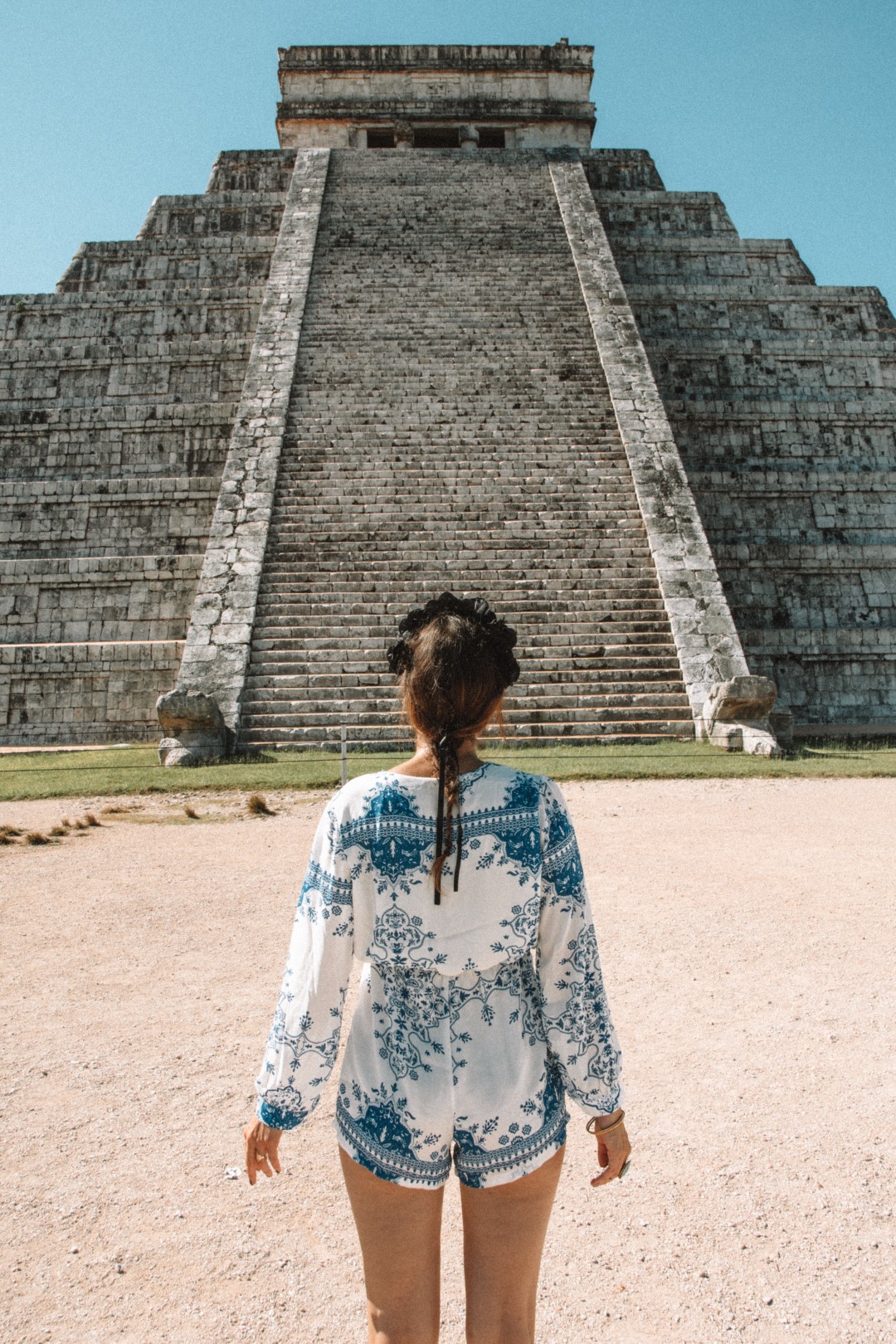
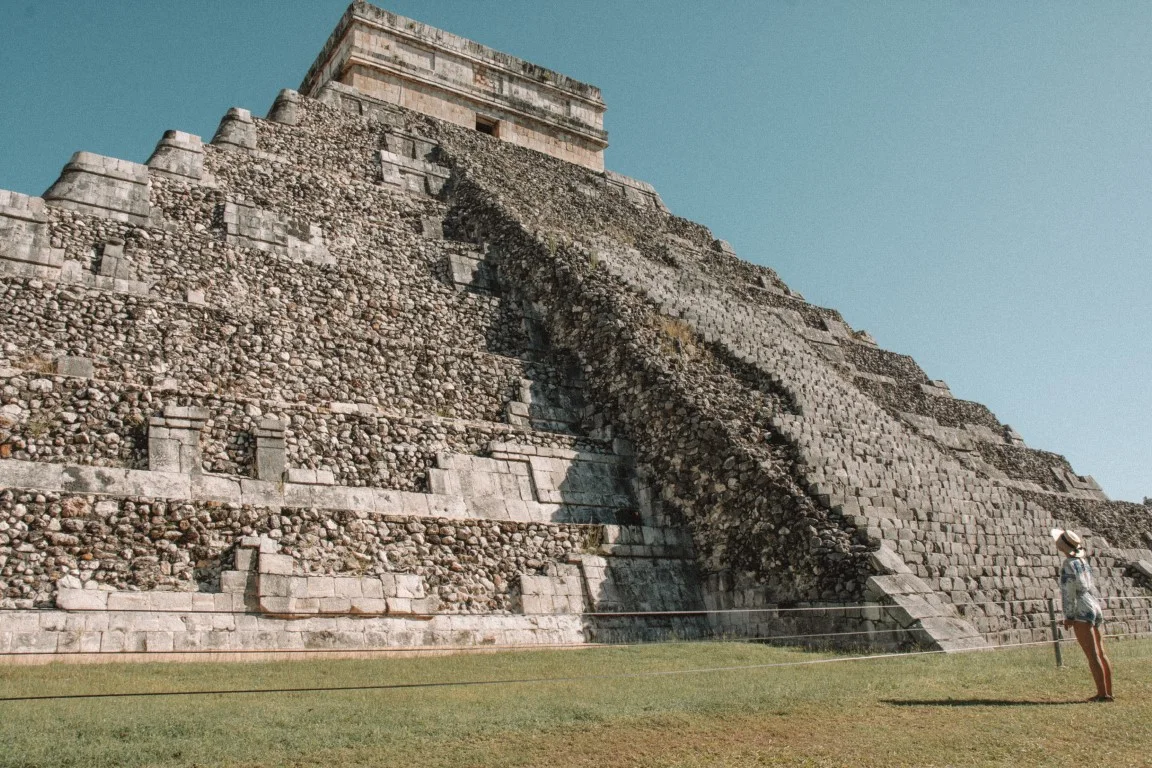
Climbing is prohibited on all structures in Chichen Itza, but that hasn’t always been the case.
Climbing up the steps of El Castillo was allowed until 2006. But then a woman fell down as she was descending from the pyramid, and didn’t survive.
The ban was also put in place to help preserve the worn-down steps from the hundreds of daily visitors that climbed them up and down.
While this is a disappointment to many people, it’s the only way to protect the ancient structures and maintain them for future generations.
THE HIDDEN CENOTE
There are four cenotes surrounding Chichen Itza, used by the city’s inhabitants as their main source of water. In fact, it’s believed that the Mayan built the settlement on this particular site because of the nearby water supplies.
The cenotes are fed by a network of underground rivers. And according to a Mexican scientist, there is a fifth underground cenote located under the Kukulkan Pyramid.
This hidden cenote hasn’t been found yet, but would be accessed through an underground passage discovered inside the pyramid.
The passageway is blocked, presumably by the Mayans themselves. It needs to be opened in order to access the sinkhole that lies underneath the temple.
THE MYSTERIOUS REASONS FOR ITS DESERTION
Chichen Itza was established in the 5th century AD, and abandoned in the 15th century by its inhabitants, who never returned.
The massive desertion is thought to have been provoked by the prolonged droughts the land suffered. This made it nearly impossible to grow crops, causing famine.
The long-lasting droughts started in the 9th century and went on for several decades, altering the region’s ecosystem until it was no longer habitable.
Chichen Itza had already been abandoned at the beginning of 800 AD for close to a century, though. It was possibly for the same reasons, but the site was resettled again later on. This makes historians wonder about the decisive reasons behind the final desertion of the city.
While there are speculations, the true cause of its downfall remains a mystery.
CHICHEN ITZA IS MAYAN…OR IS IT?
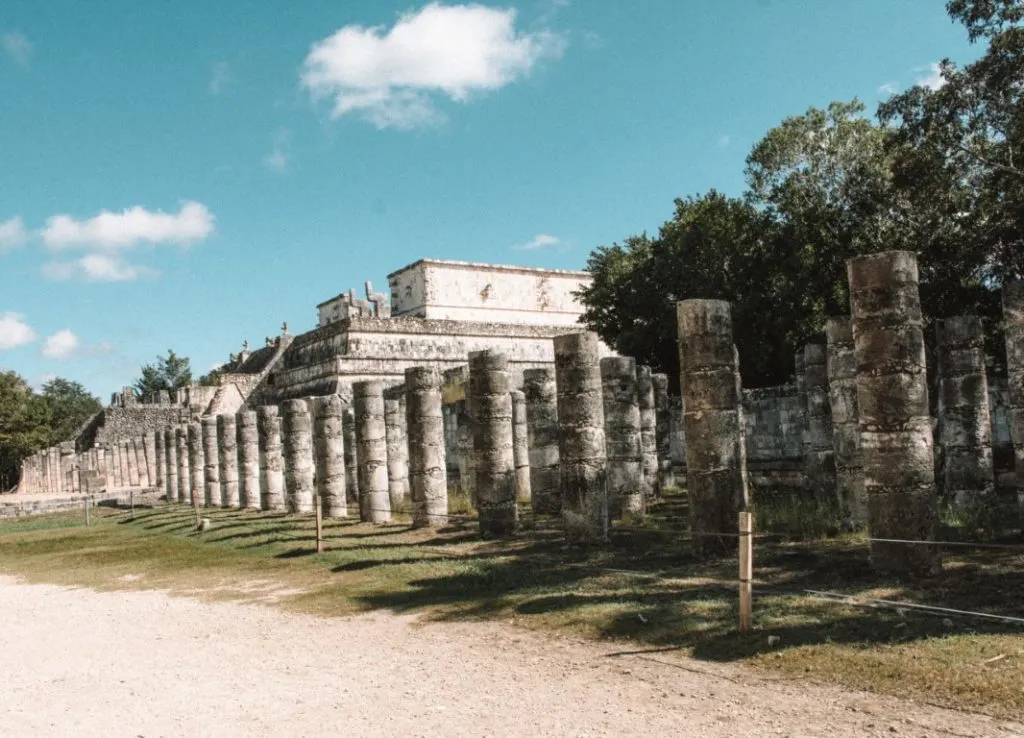
The Mayan civilization was the predominant one in the Mesoamerican region that nowadays is Mexico. That’s why most of the ruins you’ll get to marvel at on your trip to the country are likely to be Mayan. Including Chichen Itza, the most famous of them all!
But is it really Mayan, though? The answer is no (shocking, I know!) It’s true that the Mayan inhabited Chichen Itza for several centuries, but they weren’t the only civilization to do so, nor the only one that built the city!
Chichen Itza was built in two stages. The constructions from the Pre-Classic Period have a strong Mayan influence. However, the site continued to be developed after the Toltec invasion in the 10th century.
The Toltecs, who flourished in Mexico between the 10th and 12th centuries, settled in Chichen Itza. They built many of the temples that can be seen nowadays, very possibly including El Castillo, the site’s main pyramid.
Some theories disregard this notion and proclaim that the Toltec-influenced architecture is due to the trade relationship between the Toltecs and the Mayan.
While the first theory is very plausible, given that the Mayan abandoned the site for a century in 900 AD, the true explanations are still not clear.
Whichever the case, though, Chichen Itza isn’t fully Mayan as most people believe. The Toltec style is not only present in Kukulkan Pyramid, but also in the Ball Court and the Temple of Warriors.
A 1,000-YEAR-OLD CANOE WAS FOUND IN CHICHEN ITZA
In 2021, divers found and almost intact canoe in one of the cenotes in Chichen Itza. It was about 15 feet below the surface, and incredibly well-preserved.
Since then, the canoe – which is the first to ever have been found – has been thoroughly researched. It’s believed to be approximately 1 thousand years old!
The canoe could have been used to fetch water from the cenotes, but there’s a more interesting possibility. INAH released a statement suggesting that the canoe may have been placed in the cave as part of a ritual.
Remember that the Mayans believed cenotes to be the entrance to the underworld. What if they were trying to cross to the other side?
THE MYSTERY OF THE MAYAN BLUE
Did you know the Mayans, and especially the site of Chichen Itza, have a strong relation to the color blue? They invented an unusual shade of blue that has been widely analyzed by scientists, as the pigment is incredibly stable.
The color, supposedly composed by two ingredients, can be seen in various murals and decorations, and it remains bright after centuries, when blue usually fades.
It’s believed to have also been used in human sacrifices. When exploring the Sacred Cenote, a thick layer of blue mud was found at the bottom.
Chichen Itza was key to discovering the composition of the mysterious Mayan blue. Be on the lookout for the centuries-old color when you visit!
FACTS ABOUT CHICHEN ITZA FAQs
As of 2006, climbing the pyramid at Chichen Itza is not allowed.
Chichen Itza means the mouth at the well of Itza, Itza being a term given to the Mayan communities. The name is believed to refer to the sacred cenote situated nearby the city.
Chichen Itza was built in the 400s AD as a settlement and urban center of the Mayan civilization. It was set up in that particular site due to the proximity to three cenotes that provided water to the community.
It hasn’t been determined the exact time when Chichen Itza was established, but there’s evidence that suggests it was around 600-700 AD, as records of the site’s early stages show.
There are so many fascinating facts about the pyramids of Chichen Itza! One of the most popular ones happens twice a year, during the equinoxes. The shadow of a feathered serpent slithers down the pyramid’s staircase for quite a few minutes.
